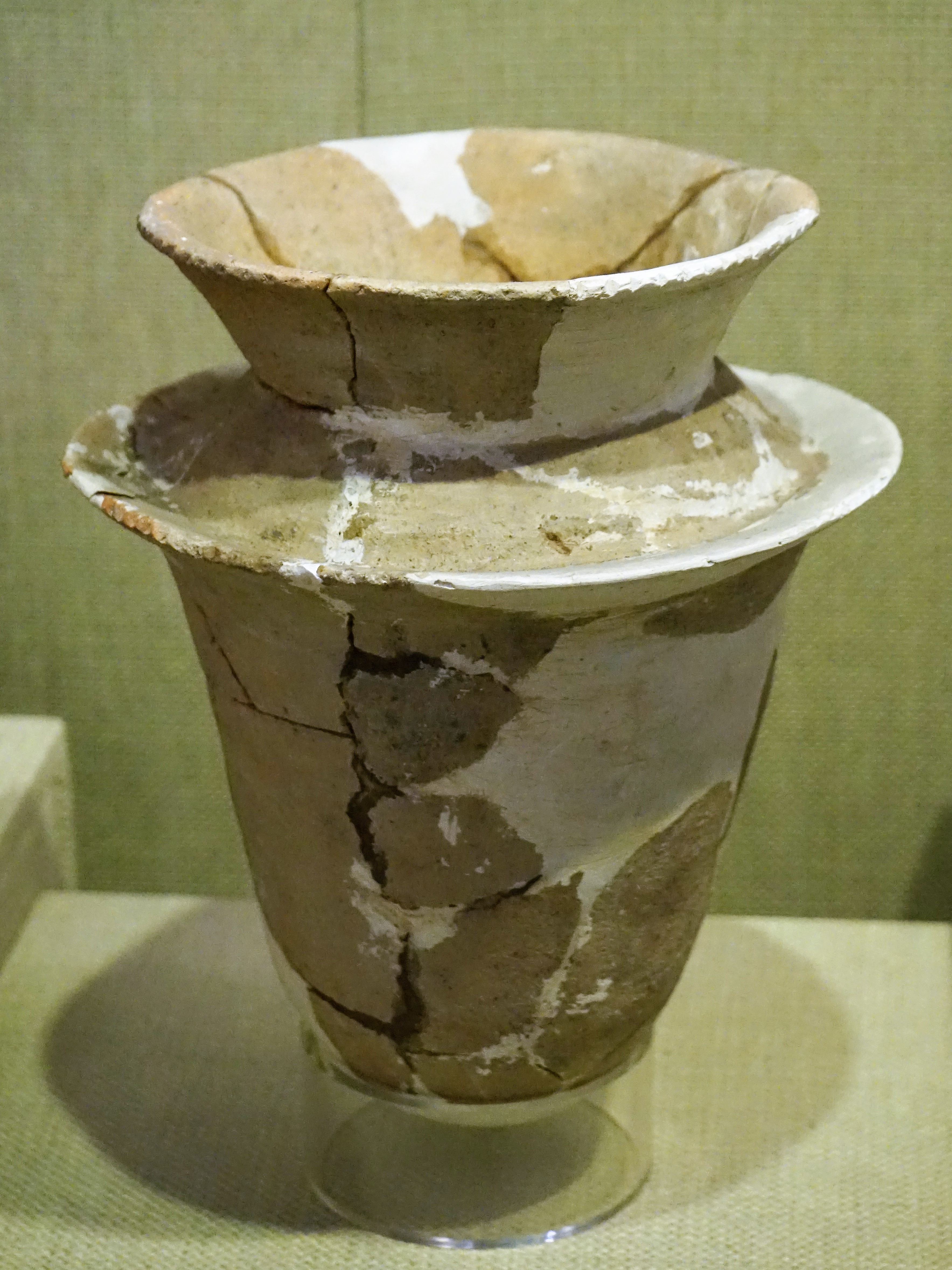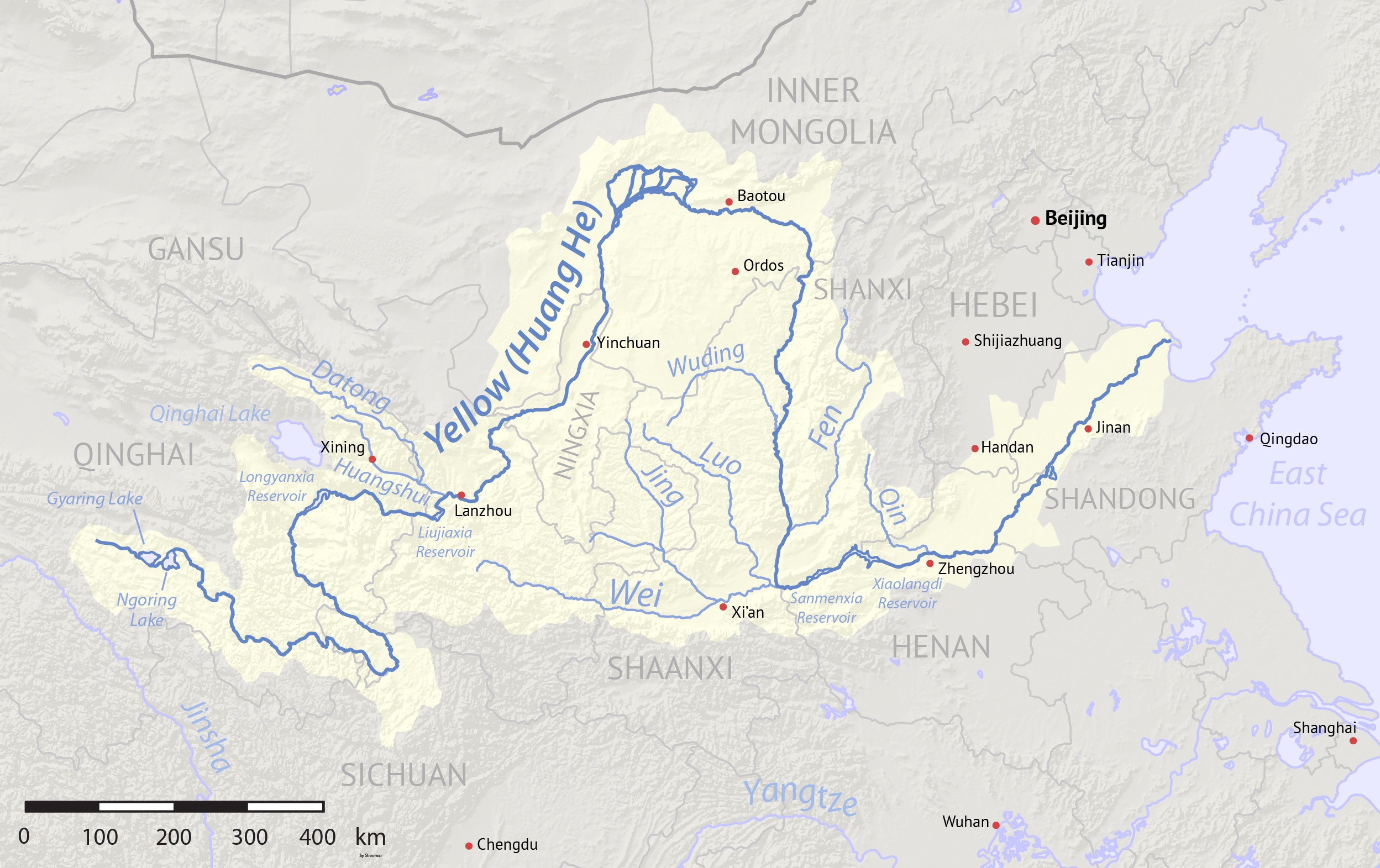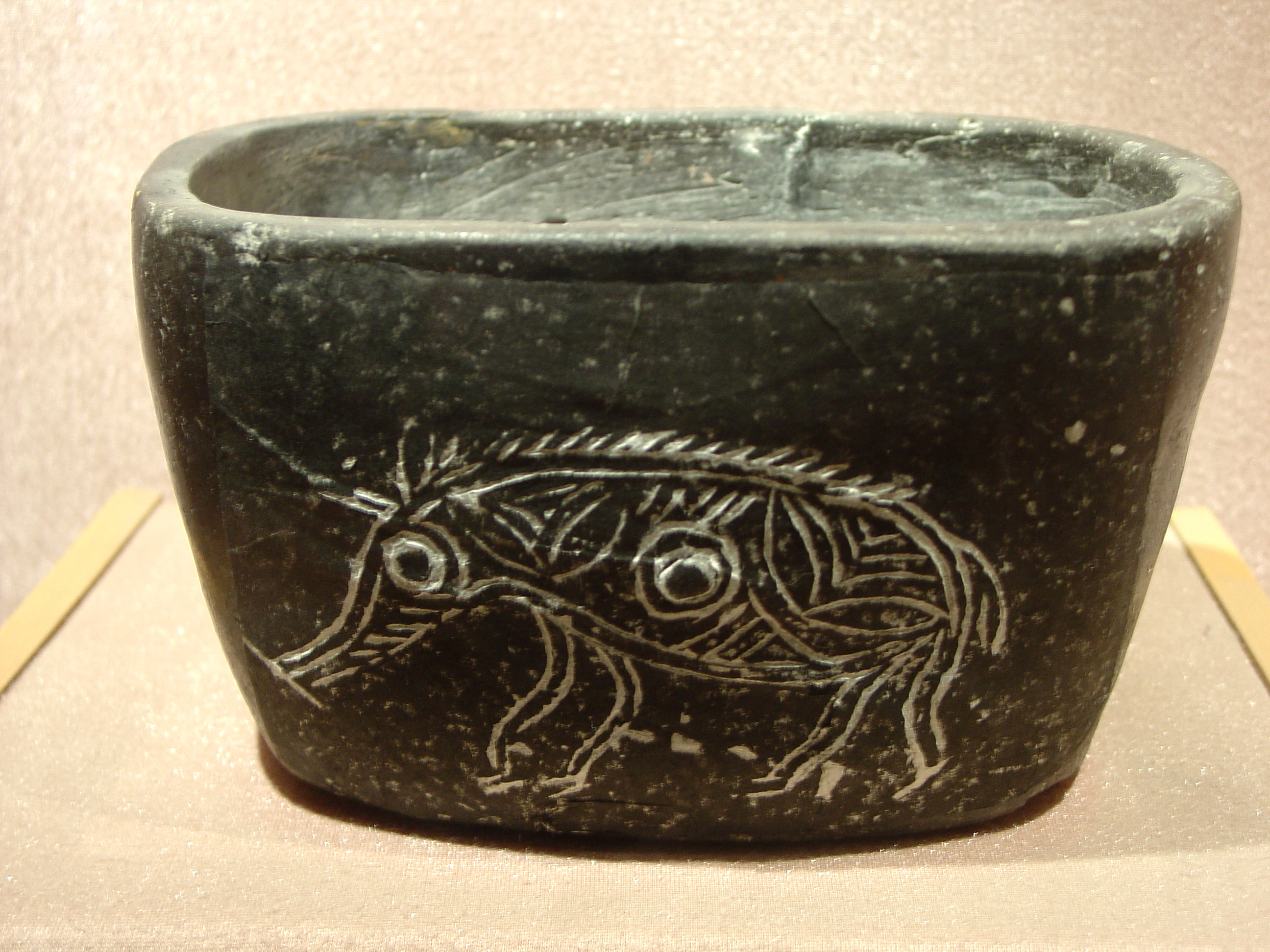|
Yangtze Civilization
Yangtze civilization () is a generic name for various ancient Neolithic and Bronze Age cultures from the Yangtze basin of China, the representative civilization of the Chinese alongside the Yellow River civilization. Cultures Upper Yangtze *Pengtoushan culture (7000–6100 BCE) *Daxi culture (5000–3000 BCE) *Qujialing culture (3400–2600 BCE) *Shijiahe culture (2500–2000 BCE) Lower Yangtze *Hemudu culture (5500–3300 BCE) *Majiabang culture (5000–3300 BCE)Wang, Haiming (2001), "Majiabang", in Peregrine, Peter N.; Ember, Martin, Encyclopedia of Prehistory, Volume 3: East Asia and Oceania, Springer, pp. 206–221, . *Songze culture (3800–3300 BCE ) *Liangzhu culture (3300–2300 BCE ) *Wucheng culture (1600 BCE–? ) See also *Yellow river civilization *Liao civilization The Liao Civilization or Liao River Civilization (), named after the Liao River, is an ancient Chinese civilization that originated in the Liao basin. It is thought to have formed in about 6,200 ... [...More Info...] [...Related Items...] OR: [Wikipedia] [Google] [Baidu] |
Yangtze River Drainage Basin Map
The Yangtze or Yangzi ( or ; ) is the longest river in Asia, the third-longest in the world, and the longest in the world to flow entirely within one country. It rises at Jari Hill in the Tanggula Mountains (Tibetan Plateau) and flows in a generally easterly direction to the East China Sea. It is the seventh-largest river by discharge volume in the world. Its drainage basin comprises one-fifth of the land area of China, and is home to nearly one-third of the country's population. The Yangtze has played a major role in the history, culture, and economy of China. For thousands of years, the river has been used for water, irrigation, sanitation, transportation, industry, boundary-marking, and war. The prosperous Yangtze Delta generates as much as 20% of China's GDP. The Three Gorges Dam on the Yangtze is the largest hydro-electric power station in the world that is in use. In mid-2014, the Chinese government announced it was building a multi-tier transport network, ... [...More Info...] [...Related Items...] OR: [Wikipedia] [Google] [Baidu] |
Majiabang Culture
The Majiabang culture, also named Ma-chia-pang culture, was a Chinese Neolithic culture that existed at the mouth of the Yangtze River, primarily around Lake Tai near Shanghai and north of Hangzhou Bay. The culture spread throughout southern Jiangsu and northern Zhejiang from around 5000 BC to 3300 BC. The later part of the period is now considered a separate cultural phase, referred to as the Songze culture. After that, It was followed by the Liangzhu culture, and co-existed with the Hemudu culture. Based on the discoveries of the archaeological findings, archaeologists had raised the statement that Majiabang culture is the origin of the early fishing, hunting and gathering economy in China, and its agriculture was developed, especially for the farming of rice, people living in this period used this as an economic method of production. Majiabang people cultivated rice. At Caoxieshan and Chuodun, sites of the Majiabang culture, archaeologists excavated paddy fields, indicating th ... [...More Info...] [...Related Items...] OR: [Wikipedia] [Google] [Baidu] |
Bronze Age Civilizations
Bronze is an alloy consisting primarily of copper, commonly with about 12–12.5% tin and often with the addition of other metals (including aluminium, manganese, nickel, or zinc) and sometimes non-metals, such as phosphorus, or metalloids such as arsenic or silicon. These additions produce a range of alloys that may be harder than copper alone, or have other useful properties, such as strength, ductility, or machinability. The archaeological period in which bronze was the hardest metal in widespread use is known as the Bronze Age. The beginning of the Bronze Age in western Eurasia and India is conventionally dated to the mid-4th millennium BCE (~3500 BCE), and to the early 2nd millennium BCE in China; elsewhere it gradually spread across regions. The Bronze Age was followed by the Iron Age starting from about 1300 BCE and reaching most of Eurasia by about 500 BCE, although bronze continued to be much more widely used than it is in modern times. Because historical artworks were ... [...More Info...] [...Related Items...] OR: [Wikipedia] [Google] [Baidu] |
Liao Civilization
The Liao Civilization or Liao River Civilization (), named after the Liao River, is an ancient Chinese civilization that originated in the Liao basin. It is thought to have formed in about 6,200 BC. This civilization was discovered when Ryuzo Torii, a Japanese archaeologist, discovered the Hongshan culture in 1908. Culture Large-scale pit-type houses, graves and temples with altars were excavated. It is thought that the Liao civilization may have been "a country" of the prehistoric age.Peiligang_culture.html" ;"title="sickle, Peiligang culture">sickle, Peiligang culture (7000–5000 BC) Yellow River civilization or Huanghe civilization (), Hwan‐huou civilization is an anc ... References {{Neolithic cultures of China History of Inner Mongolia Neolithic cultures of China History of Liaoning History of Manchuria 7th-millennium BC establishments ... [...More Info...] [...Related Items...] OR: [Wikipedia] [Google] [Baidu] |
Yellow River Civilization
Stone sickle, Peiligang culture (7000–5000 BC)">Peiligang_culture.html" ;"title="sickle, Peiligang culture">sickle, Peiligang culture (7000–5000 BC) Yellow River civilization or Huanghe civilization (), Hwan‐huou civilization is an ancient Chinese civilization that prospered in the middle and lower basin of the Yellow River. Agriculture was started in the flood plain of the Yellow River, and before long, through flood control and the irrigation of the Yellow River, cities were developed and political power found reinforcement. One of the " four major civilizations of the ancient world", it is often included in textbooks of East Asian history, but the idea of including only the Yellow River civilization as one of the four biggest ancient civilizations has become outdated as a result of the discovery of other early cultures in China, such as the Yangtze and Liao civilizations. The area saw the Yangshao and Longshan cultures of the Neolithic era and developed into the br ... [...More Info...] [...Related Items...] OR: [Wikipedia] [Google] [Baidu] |
Wucheng Culture
The Wucheng culture (吳城文化) was a Bronze Age archaeological culture in Jiangxi, China. The initial site, spread out over , was discovered at Wucheng Township, Jiangxi. Located on the Gan River, the site was first excavated in 1973. The Wucheng culture probably developed in response to cultural contacts with the expanding Erligang culture, melding Erligang influences with local traditions. The Wucheng culture was a distinct contemporary of Sanxingdui and Yinxu (Anyang). The site at Wucheng was a regional protoporcelain production center; the culture is known for its distinctive geometric pottery. The Wucheng culture is also known for its bronze bells, the clapperless ''nao''. The Wucheng site at Xingan (archaeological site), Xingan contained a rich cache of localized bronze vessels. The bronze axes were similar to those of the Dong Dau culture in the Red River (Asia), Red River valley. The earliest period, around 1600 BCE, contemporaneous with late Erligang, yielded pottery s ... [...More Info...] [...Related Items...] OR: [Wikipedia] [Google] [Baidu] |
Liangzhu Culture
The Liangzhu culture (; 3300–2300 BC) was the last Neolithic jade culture in the Yangtze River Delta of China. The culture was highly stratified, as jade, silk, ivory and lacquer artifacts were found exclusively in elite burials, while pottery was more commonly found in the burial plots of poorer individuals. This division of class indicates that the Liangzhu period was an early state, symbolized by the clear distinction drawn between social classes in funeral structures. A pan-regional urban center had emerged at the Liangzhu city-site and elite groups from this site presided over the local centers. The Liangzhu culture was extremely influential and its sphere of influence reached as far north as Shanxi and as far south as Guangdong. The primary Liangzhu site was perhaps among the oldest Neolithic sites in East Asia that would be considered a state society. The type site at Liangzhu was discovered in Yuhang County, Zhejiang and initially excavated by Shi Xingeng in 1936. On 6 ... [...More Info...] [...Related Items...] OR: [Wikipedia] [Google] [Baidu] |
Songze Culture
The Songze Culture was a Neolithic culture that existed between 3800 and 3300 BCE in the Lake Tai area near Shanghai. Dates Three radiocarbon dates were taken from Songze culture layers at Jiangli near Lake Tai. Two of the dates were obtained from charred rice grains, returning dates of 3360–3090 BCE and 3540–3370 BCE. The third date was taken from knotgrass and produced a date of 3660–3620 BCE. Although it is accepted to be the successor of the Majiabang culture, others have suggested that Songze was a successor phase to the Hemudu culture. Sites Songze In 1957, archaeologists discovered a site north of Songze Village near Zhaoxiang Town in Shanghai's Qingpu District. Excavations have been conducted throughout 1961, 1974–1976, 1987, 1994–1995, and 2004. These revealed three cultural layers: the most recent had pottery from the Spring and Autumn period; the middle layer was a cemetery with 148 graves and numerous artefacts; the oldest layer belonged to a village of the ... [...More Info...] [...Related Items...] OR: [Wikipedia] [Google] [Baidu] |
Hemudu Culture
The Hemudu culture (5500 BC to 3300 BC) was a Neolithic culture that flourished just south of the Hangzhou Bay in Jiangnan in modern Yuyao, Zhejiang, China. The culture may be divided into early and late phases, before and after 4000 BC respectively. The site at Hemudu, 22 km northwest of Ningbo, was discovered in 1973. Hemudu sites were also discovered at Tianluoshan in Yuyao city, and on the islands of Zhoushan. Hemudu are said to have differed physically from inhabitants of the Yellow River sites to the north. Some authors propose that the Hemudu Culture was a source of the pre-Austronesian cultures. Material culture Some scholars assert that the Hemudu culture co-existed with the Majiabang culture as two separate and distinct cultures, with cultural transmissions between the two. Other scholars group Hemudu in with Majiabang subtraditions. Two major floods caused the nearby Yaojiang River to change its course and inundated the soil with salt, forcing the people of Hem ... [...More Info...] [...Related Items...] OR: [Wikipedia] [Google] [Baidu] |
Mature Rice (India) By Augustus Binu
{{disambig, surname ...
Mature is the adjectival form of maturity, as immature is the adjectival form of immaturity, which have several meanings. Mature or immature may also refer to: *Mature, a character from ''The King of Fighters'' series *"Mature 17+", a rating in the Entertainment Software Rating Board video game rating system *Victor Mature (1913-1999), American actor *Immature (band), an American boy band See also * Adult (other) * Maturation (other) * Maturity (other) * Ripeness In United States law, ripeness refers to the readiness of a case for litigation; "a claim is not ripe for adjudication if it rests upon contingent future events that may not occur as anticipated, or indeed may not occur at all." For example, if a ... [...More Info...] [...Related Items...] OR: [Wikipedia] [Google] [Baidu] |
Shijiahe Culture
The Shijiahe culture (2500–2000 BC) was a late Neolithic culture centered on the middle Yangtze River region in Shijiahe Town, Tianmen, Hubei Province, China. It succeeded the Qujialing culture in the same region and inherited its unique artefact of painted spindle whorls. Pottery figurines and distinct jade worked with advanced techniques were also common to the culture. Overview The culture is named after its type site, the Shijiahe site cluster, in Tianmen, Hubei, in the Middle Yangtze Valley. The lower layer of the site belonged to the Qujialing culture. The city site is said to be a "nearly perfect square" of in area and was densely populated. It may have housed from between 15,000 and 50,000 inhabitants within the settlement's walls. At Dengjiawan, within the Shijiahe site cluster, some pieces of copper were discovered, making these the earliest copper objects discovered so far in southern China. The primary mode of travel was thought to be watercraft. People even built ... [...More Info...] [...Related Items...] OR: [Wikipedia] [Google] [Baidu] |
Qujialing Culture
The Qujialing culture (3400–2600 BC) was a Neolithic civilisation centered primarily on the middle Yangtze River region in Hubei and Hunan, China. The culture succeeded the Daxi culture and reached southern Shaanxi, northern Jiangxi and southwest Henan. Artefact types unique to the culture include ceramic balls and painted spindle whorls; the latter were inherited by the succeeding Shijiahe culture. The type site at Qujialing was discovered in Jingshan County, Hubei, China. The site was excavated from 1955 to 1957. The remains of chickens, dogs, pigs and sheep were discovered at the site. The remains of fish were discovered in ten storage pits. Egg shell pottery and tripods were also discovered at the site. City walls, man-made water systems, large courtyard buildings, and residential sites were found on the site. Many of the artefacts from the culture are located in the Hubei Provincial Museum. See also * List of Neolithic cultures of China * Chengtoushan culture * Daxi cult ... [...More Info...] [...Related Items...] OR: [Wikipedia] [Google] [Baidu] |





_-_DSCN8233BB.jpg)


